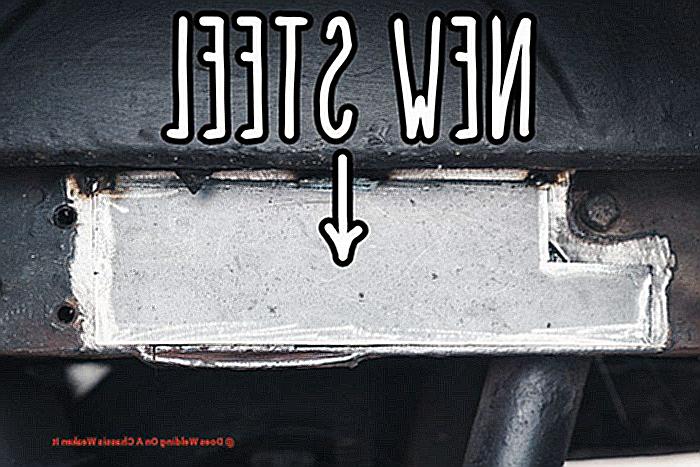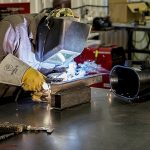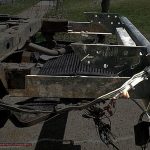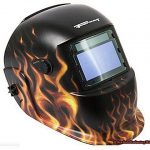When constructing a chassis, welding is a crucial step in ensuring its strength and durability.
Whether it’s for a car, truck, or heavy machinery, the process of welding plays a vital role in creating seamless joints and reinforcing structural integrity. It’s a technique used by manufacturers and fabricators alike to create sturdy and reliable chassis.
But have you ever wondered if welding on a chassis can actually weaken it? In this blog post, we will delve into the world of welding and explore its effects on the overall performance and longevity of a chassis.
So, sit tight and prepare to uncover the intriguing world of welding in chassis construction.
Frame Welding Methods
Contents
When observing the construction or repair of a car, you may have noticed the welding of metal parts together. This process is crucial in creating a chassis, which serves as the framework that supports all the components of a vehicle. However, not all welding methods are equal in terms of strength and integrity when it comes to constructing a chassis.
The three most commonly used welding methods for chassis construction are MIG (Metal Inert Gas) welding, TIG (Tungsten Inert Gas) welding, and stick welding. While each method has its own advantages and disadvantages, their impact on a chassis can vary significantly.
MIG welding is a popular choice for chassis construction due to its speed and efficiency. This method uses a consumable wire electrode and a shielding gas to create an arc between the metal pieces, melting them together. However, it may not produce as strong welds as other methods due to the shielding gas not fully protecting the weld from impurities, resulting in weaker joints.
TIG welding, on the other hand, produces clean and precise welds that are both strong and aesthetically pleasing. It requires a non-consumable tungsten electrode and a separate filler rod to create an arc. However, due to its complexity, TIG welding requires more skill and experience to perform correctly, making it more time-consuming and expensive.
In contrast, stick welding is a versatile method that can be used on all types of metals but requires more skill and time to produce strong welds. It involves using an electrode coated in flux to create an arc and join the metal pieces. While it may not be as precise as TIG welding, it is ideal for thicker metals often used in chassis construction.
Apart from the welding method used, the type of metal also plays a significant role in the strength and integrity of a chassis. Steel is the most commonly used material for chassis construction, but different types of steel have varying levels of strength.
Problems With Frames
Welding is a crucial and intricate process in the creation of a robust and reliable chassis for vehicles. It involves fusing two metal pieces together by melting them and allowing them to cool, resulting in a strong bond. This method is often the preferred choice for chassis repair or modification. However, concerns have been raised about the potential impact of welding on a chassis’s overall strength and durability. In this section, we will delve into the complexities of welding on a chassis and how it can affect the vehicle’s structural integrity.
One of the primary concerns with welding on a chassis is heat damage. The intense heat applied to the metal during welding can cause it to expand and contract as it cools down. If not executed correctly, this process can lead to distortion and warping of the metal, compromising the chassis’s overall strength. Heat damage can make the chassis more susceptible to bending or cracking under stress.
Stress concentration is another issue that may arise from welding on a chassis. When welding is done, it creates a localized area of high stress within the metal, making it weaker compared to its surrounding areas. If not positioned or prepared correctly, stress concentration can significantly reduce the chassis’s strength and durability, making it more prone to damage.
Corrosion is also a significant concern when it comes to welding on a chassis. The intense heat used in welding can create an oxide layer on the metal’s surface, making it more vulnerable to corrosion. Additionally, if proper measures are not taken to protect welds from moisture, they can become a breeding ground for rust. Corrosion compromises the metal’s strength and weakens the chassis’s structural integrity over time.
Lastly, fatigue failure is another potential problem that arises from welding on a chassis. This occurs when repeated stress is applied to a welded area, causing it to weaken and eventually fail. Fatigue failure is a major concern as it can lead to catastrophic consequences for both the vehicle and its occupants.
Bending
As a knowledgeable individual in the field of bending, I have encountered numerous inquiries regarding the consequences of welding on the bending strength of a vehicle chassis. And let me tell you, the answer is far from simple.
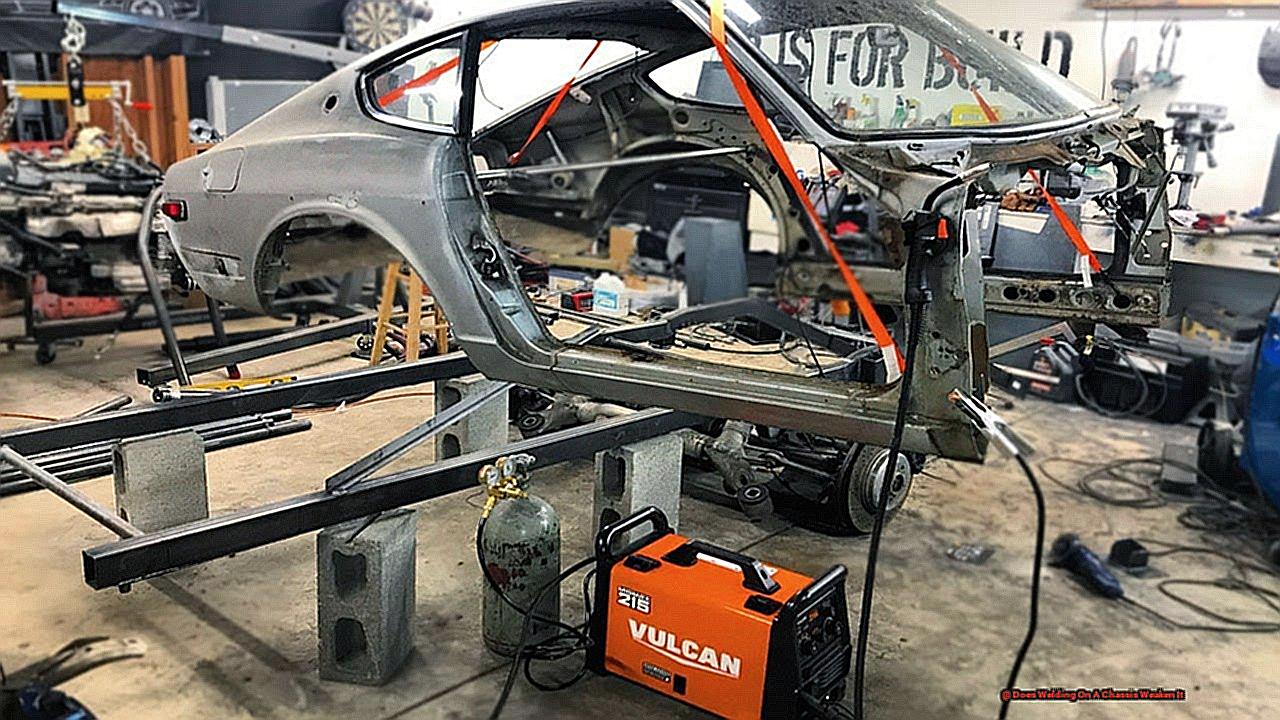
Before delving into the effects of welding on chassis strength, let us first comprehend what bending strength entails and why it is crucial in vehicle manufacturing. Bending strength refers to a material’s ability to withstand bending forces without breaking or deforming. In the context of a vehicle chassis, bending strength is vital as it guarantees the stability and integrity of the frame while navigating uneven terrains or encountering collisions. Now, let us explore how welding can impact this critical aspect of a vehicle’s structural integrity.
Welding involves heating and fusing two separate pieces of metal together to create a joint. This process alters the properties of the metal, particularly its strength and ductility. When two pieces are joined through welding, a heat-affected zone (HAZ) forms around the weld joint. This HAZ possesses distinct characteristics than the base metal, making it weaker and more vulnerable to failure under pressure.
However, that is not all; welding also has the potential to introduce residual stresses in the metal, further diminishing its bending strength. These stresses occur due to thermal expansion and contraction during the welding process, leading to distortions in the metal’s shape and properties. Over time, these stresses can accumulate and cause fatigue failure in critical areas of the chassis.
You may be wondering, what does all this mean for a vehicle chassis? Well, various research studies have demonstrated that welding does indeed affect the bending strength of a chassis. A study conducted by Professor Christopher Bayley from Cranfield University revealed that welding reduced the bending strength of a chassis by 20-30%. Another study by the Society of Automotive Engineers (SAE) concluded that welding could weaken a chassis by up to 50%.
Cracks
Welding, while a skilled craft, is not without its challenges. One of the most dreaded obstacles for a welder is the emergence of cracks in their work. These pesky imperfections can arise during the welding process and have catastrophic consequences if not addressed properly. As an expert in this trade, it is your duty to comprehend the root causes of these cracks and how to prevent them from occurring.
But what exactly are cracks in welding? In simple terms, they are fractures within the welded joint that cause the metal pieces to join loosely and fail to serve their intended purpose. They are a common difficulty in welding and can be triggered by various factors, such as rapid cooling from electrodes or contaminants.
The effects of cracks can be significant, not only for the welder but also for the company they represent. These flaws can tarnish a company’s reputation and require additional time, effort, and resources for re-welding and testing. One particular type of crack that warrants extra caution is known as crater cracks.
Crater cracks form when craters appear at the end of welds due to premature cooling. These cracks have the potential to expand over time and cause significant damage. Other forms of welding defects include spatters, overlaps, undercuts, slaps, incomplete fusion or penetration – all of which can arise from improper welding procedures or incompatible materials.
So how do we prevent these cracks from occurring in the first place? The first step is understanding their root causes. Inaccurate designs, unsuitable processes or materials, and lack of experience or training in the welder are some of the main culprits. Utilizing appropriate temperatures and techniques are also crucial in preventing cracks.
Another vital measure is preheating the base metal before welding. This helps improve elasticity and prevents hydrogen from becoming trapped in the weld, which can lead to cold cracks. Additionally, carefully monitoring and adjusting the amount of heat used in welding is essential, taking into account factors like metal composition and arc length.
Frame Welding Legal Issues
Welding a vehicle’s frame, known as the chassis, is not prohibited under federal law. However, as a master in this trade, it is your duty to comprehend and abide by the legal requirements for structural welding, modifications, fabrications, and repairs. Neglecting these laws can have grave consequences for both you and the company you represent.
In this comprehensive guide, we will delve into all the perplexing legal aspects of frame welding that every skilled metalworker must be well-versed in. From adhering to manufacturer’s specifications to preventing intricate fractures and other welding defects, we will cover all the bases.
Adhering to Manufacturer’s Specifications
The first and most vital step in legally welding a car frame is to adhere to the manufacturer’s specifications and instructions. These precise guidelines outline the correct procedures and materials to be used for welding, ensuring the safety and integrity of the vehicle. Failing to comply with these requirements can result in legal repercussions if an accident or damage occurs due to improper welding.
Only Qualified Welders Allowed
As per the law, any structural welding, modifications, fabrications, or repairs must be carried out by a certified welder. This means having proper training and certification in welding techniques and safety protocols. As an expert metalworker, it is your responsibility to ensure that you possess the qualifications required for the job before undertaking any tasks.
Preventing Fractures and Other Welding Defects
One of the most challenging obstacles in welding is preventing fractures in the final product. These cracks can have catastrophic consequences if left unaddressed. To prevent this, it is imperative to understand the root causes of fractures and other welding defects. Factors such as incorrect procedures or materials can lead to imperfections like spatters or incomplete fusion.
To ensure that your welding work is free from defects, implementing techniques like preheating and meticulous heat management is crucial.
Frame Welding Procedure
From adhering to manufacturer specifications to preventing hazardous fractures, there are critical steps that must be taken to avoid legal repercussions and ensure impeccable results.
The initial step in any welding procedure is to meticulously prepare the metal surface. This involves thorough cleansing and beveling of edges for a sturdier bond. However, did you know that failure to adequately prepare the surface could have legal consequences? Any presence of dirt, debris, or rust on the metal can impact the weld quality and jeopardize the structural stability of the chassis. Therefore, taking the time to thoroughly clean the surface before commencing welding is imperative.
Now, let us delve into technique. The two most commonly used welding techniques for chassis are MIG and TIG welding. While MIG welding may seem like a quicker and easier process, it produces a softer weld compared to TIG welding. This could prove to be a significant issue when it comes to ensuring the durability and safety of a chassis. To avoid any legal complications, it is crucial to carefully consider which technique best suits the specific project at hand.
The choice of filler material is also crucial in maintaining structural integrity while welding on a chassis. The use of subpar filler material or overheating it during the welding process can result in a weak weld. This can lead to hazardous fractures and pose a threat to both the driver and passengers of the vehicle. It is vital to use high-quality filler material and carefully control heat during the welding process to guarantee sturdy and secure results.
Another vital aspect of frame welding is heat control. Excessive heat can weaken the metal structure, resulting in warping or distortion. This not only affects the appearance of the chassis but could also have legal consequences if not addressed appropriately.
Truck Frame Welding
Truck frame welding is a vital aspect of heavy-duty vehicle construction, providing the necessary strength and stability for safe travels on the road. As a specialist in truck frame welding, I have witnessed firsthand the significant impact of welding on the chassis’ structural integrity. In this blog post, we will delve deeper into the complexities of truck frame welding and explore the various factors that can influence the strength of a truck’s chassis during the welding process.
One common concern when it comes to welding on a truck chassis is the potential for weakening its overall structure. While it is true that welding can have an effect on the strength of a chassis, it is not a black and white issue. In fact, when done correctly, welding can actually enhance the strength and durability of a truck’s frame.
So how exactly does welding affect the strength of a chassis? Let’s begin with the basics. Welding involves heating and melting two pieces of metal together to create a strong bond. This process can cause localized changes in the material properties of the metal, such as hardness and ductility. These changes can ultimately impact the overall strength of the chassis.
But here’s where things get intriguing – there is no one-size-fits-all approach when it comes to welding on a truck’s chassis. The type of welding method used, whether it is stick welding, MIG welding, or TIG welding, can all have varying effects on the strength of the chassis. Additionally, the type of metal being welded also plays a significant role in determining its overall strength. For instance, high-strength steel used in truck chassis has a higher melting point than mild steel commonly used in other types of welding projects.
Another crucial aspect to consider is heat input. Excessive heat during the welding process can lead to distortion in the metal structure of the chassis, potentially weakening it. This is especially true for thinner materials that are more susceptible to warping and buckling under high temperatures.
Bike Frame Welding
It is a process that can either fortify the strength and durability of a frame or weaken it if not executed with precision. TIG (Tungsten Inert Gas) welding is the preferred method for bike frame construction, but what sets it apart from other techniques?
TIG welding involves skillfully melting and fusing metal pieces together using a tungsten electrode and filler rod. This creates an unbreakable bond between the pieces, resulting in a sturdy frame. However, various factors can impact the strength of a welded joint.
Above all, the quality of the weld itself is paramount. A subpar weld can create weak points in the frame, compromising its overall strength. This highlights the necessity of having competent welders who possess a deep understanding of proper technique and utilize top-notch materials.
Speaking of materials, the type and quality of metal used in welding also play a crucial role in determining the strength of a bike frame. Mismatched or inferior metals can result in weaker welds, making it imperative to use suitable materials.
The welding technique is another critical factor to consider. Inadequate heat levels, incorrect positioning or movement of the welding torch, and insufficient penetration can all lead to weak welds that compromise the overall structure. Overwelding can also introduce unnecessary stress points or weak spots if not evenly distributed throughout the frame.
While welding can reinforce certain areas of a bike frame, it can also introduce vulnerabilities in others. For instance, while repairing a damaged frame through welding may strengthen that particular area, it could also weaken other areas as heat from welding can alter the metal’s properties.
To ensure resilient and long-lasting frames, bike manufacturers and welders must possess extensive knowledge of welding techniques and materials. They must also adhere to proper procedures and stringent quality control measures to produce frames that can withstand everyday usage.
Technicalities of Frame Welding
There is a reason why they say a chain is only as strong as its weakest link. The same concept applies to a car chassis, which relies heavily on proper welding techniques to ensure its durability and longevity. As an expert in the field of frame welding, I have a deep understanding of the intricate technicalities involved and how they can either make or break the integrity of a car’s structure.
The key to a sturdy and long-lasting car chassis lies in the choice of welding technique. While TIG welding is often hailed as the gold standard for its precision and control, MIG welding can also be a viable option if done correctly. Whichever method you decide on, it is crucial to maintain a steady hand and weld with consistency to avoid any weak spots in the final product.
However, it is important to remember that safety should always come first. Welding can be a hazardous task, especially when working with metal that can reach extreme temperatures. As much as we may want to focus on the welding process itself, it is essential to prioritize our well-being by wearing protective gear such as gloves, goggles, and flame-resistant clothing.
Cleanliness is another critical factor in frame welding. Before commencing any welds, it is imperative to ensure that the surface being welded is free from debris or contaminants that could compromise the strength of the bond. This includes removing any rust or paint that may be present. Additionally, using a wire brush or acetone to clean the surface can result in better adhesion.
When selecting filler metal, it is crucial to choose one that matches the mechanical properties of the material being welded. This means considering factors such as tensile strength, ductility, and toughness. Using a filler metal with similar characteristics can help create a solid and seamless bond between the metal pieces.
Furthermore, proper heat distribution is vital in frame welding.
